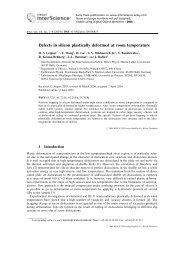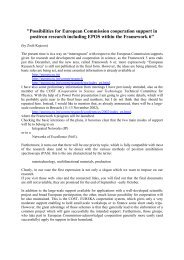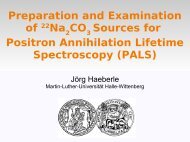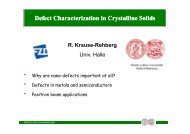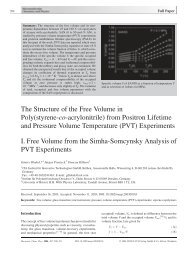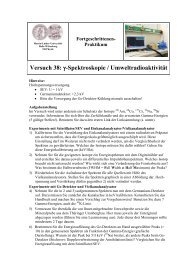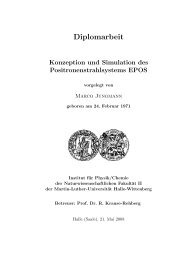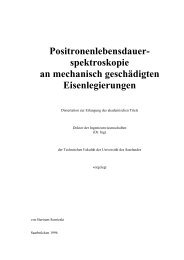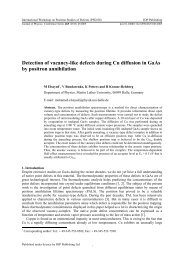Introduction into defect studies in ceramic materials(III) - Positron ...
Introduction into defect studies in ceramic materials(III) - Positron ...
Introduction into defect studies in ceramic materials(III) - Positron ...
Create successful ePaper yourself
Turn your PDF publications into a flip-book with our unique Google optimized e-Paper software.
Defect Chemical Reaction<br />
6. Electronic versus Ionic Compensation of Solutes<br />
Another important complexity <strong>in</strong> the electrical behavior of solutes <strong>in</strong><br />
ionic <strong>ceramic</strong>s arises from the existence of simultaneous equilibra.<br />
• In a covalent semiconductor such as silicon, the effectiveness of<br />
donor and acceptor solutes at a given temperature is solely<br />
determ<strong>in</strong>ed by their ionization energies.<br />
• In oxide semiconductors, the effectiveness of even shallow dopants<br />
also depends on the extent of oxidation and reduction.<br />
1. ionically compensated<br />
2. electronically compensated<br />
3. mixed compensated<br />
• This effect is of particular <strong>in</strong>terest <strong>in</strong> electronic <strong>ceramic</strong> systems,<br />
where large variations <strong>in</strong> electrical conductivity can result with<br />
changes <strong>in</strong> Po 2 and temperature at a constant dop<strong>in</strong>g level, due to<br />
changes <strong>in</strong> the compensation mechanism.<br />
Let us now consider the <strong>in</strong>corporation of Nb 2 O 5 as a solute <strong>in</strong> TiO 2 , for<br />
which both ionic and electronic compensation can occur.<br />
15



